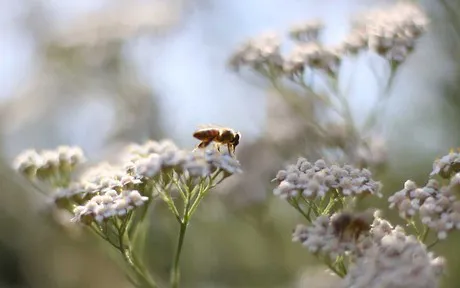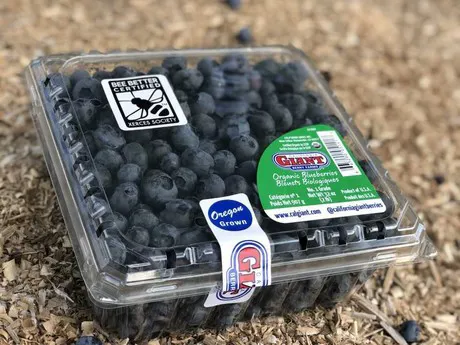As California Giant Berry Farms celebrates a partnership with a key grower partner in Oregon, they are also celebrating a new certification program together that the company says boosts sustainability efforts, protects endangered species and provides delicious fresh organic and conventionally grown blueberries to the consumer.
Together, AC Foods and California Giant, are now Bee Better Certified™ by the Xerces Society. According to the companies, the certification process ensures that each farm provides native habitat for wild bees. The certified farms, Halls Ferry Farm and Humbug Farm, provide a minimum of 5 percent native pollinator habitat on farm that includes mandatory buffer zones & nesting areas for wild bees.
Supporting a positive environment for wild bees and other pollinators is critical in the successful farming of blueberries. Even more important to AC Foods and California Giant in supporting bee habitat is the need to ensure a future for all wild pollinators, which begins with restoring native habitat. While the industry at large uses commercial pollinators, wild bees can live naturally within these blueberry farms thriving in dedicated land while they do their work pollinating blueberries in a healthy environment for them and the fruit.

Blueberry farmers know that bees are one of their most valuable assets on their farms and the Xerces Society is focused on working with farmers to improve the biodiversity of the farm and make it better for pollinators.
The Xerces Society which developed the Bee Better Certified™ program is an international nonprofit organization that protects the natural world through the conservation of invertebrates and their habitats. The society says it has the world’s largest pollinator conservation team in the world and is engaged in the creation of pollinator habitat by working with agricultural landscapes across the country.
Bee Better Certification through the Xerces Society works with farmers to provide forage for wild bees, which they say is critical for their reproductive success. When more pollen and nectar are available close to bee nest sites, female bees can forage more efficiently and lay more eggs. The ultimate result is a farm that grows an abundance of its own pollinators. As 35 percent of crop production worldwide depends on pollinators, this is an important step in protecting and building native habitats for the future of agriculture.

When asked “Why bee better??” Markus Duran, North American Blueberry Operations Manager, says “The response I have is, why not? Many of the food sources we enjoy today, depend on bees! They are facing many threats including disease and less habitat to be reproductive.”
“Xerces society has developed a standard to ensure protection from pesticides, abundance of flowering areas throughout the growing season, a place for the bees to call home, & an ecosystem where the spread of disease is limited due to more native bees vs commercial bees. Sustainable farming to its core depend on bee friendly environments. I believe in Bee Better, the Xerces Society has created something special," adds Duran.
Today, consumers can now find the Bee Better certification mark labeled on Oregon grown California Giant blueberries. The company says consumers will have the opportunity to know with each purchase they are protecting wild bees on thriving and nutritious farms.
For more information:
Cindy Jewell
California Giant Berry Farms
Ph: +1 (831) 728-1773
cjewell@calgiant.com
www.calgiant.com
